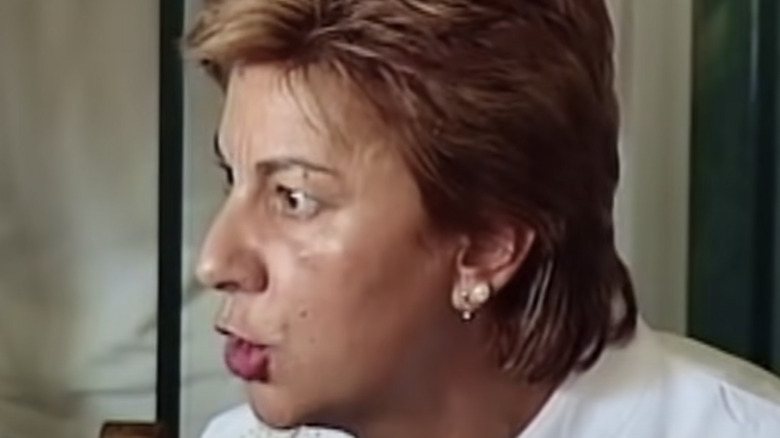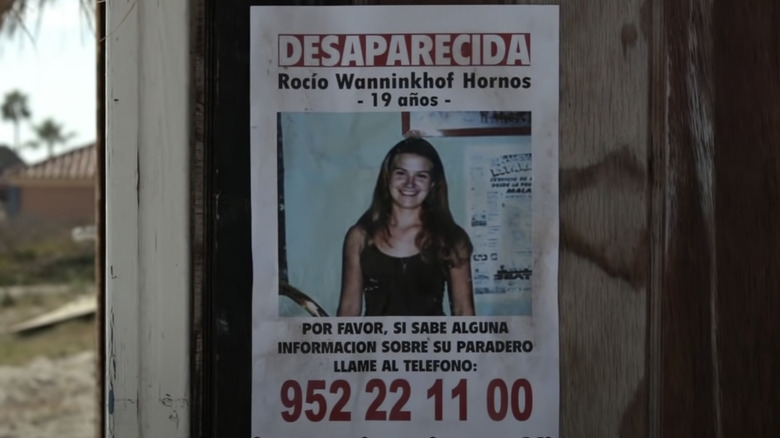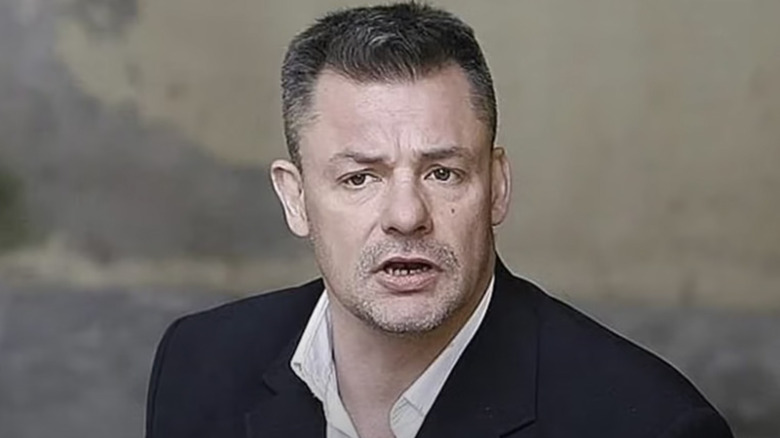Murder By The Coast: How Long Did Loli Vasquez Spend In Prison?
On the night of October 9, 1999, and under eerie circumstances, Rocío Wanninkhof Hornos, a teenager from Mijas, Málaga, Spain, seemed to have disappeared. She had spent the early evening at her boyfriend's home and left so she could go home and shower before a night out with him and some friends at a fair. She never made it out that night. In fact, she never got home at all. The next morning, her mother, Hilaria "Alicia" Hornos, frantically called her friends to ask when they had last seen her, per the Cinemaholic. Before calling the police to report her disappearance, she went out looking on her own with her partner. Together, they found Rocío's shoes, and then some of her personal items.
That was enough for the two to contact the police. With the help of a formal search party led by local authorities and hundreds, if not thousands, of volunteers in the community, they found a trail of blood that led them to a pool of it in a nearby lot, per the Daily Mail. Bloody streaks on the pavement suggested to investigators that the body had been dragged, and nearby tire marks indicated that perhaps a body had been loaded up and driven away, according to Yahoo! News. It would be three more weeks before the body of Rocío Wanninkhof was found. Her wounds showed she had been beaten badly, and that she had been stabbed nine times.
A year with no leads
The only theory that the police had was that Wanninkhof's killer was someone she knew, and that it had been a "crime of passion" because she was stabbed multiple times. The investigators intensely interviewed her family members and others who were close to her, including María Dolores "Loli" Vázquez, the former lover of Rocío's mother. She had helped raise Alicia's children and continued living with the family for years, even after their romantic relationship ended.
A year had gone by with no leads. So, a year after the murder, and facing immense internal and public pressure, the police settled on Loli Vázquez and arrested her a year after the murder, on October 7, 2000, according to Distractify. It didn't matter that she had two alibis or that there was no material evidence against her. Homophobia and general misogyny made it easier for the narrative the police put forward to be accepted among the media and the public. Television and newspapers presented her as a calculated person who had anger toward her former partner and the daughter.
"From the time Dolores Vázquez was arrested she became the focus of the media," Francesc Barata, a professor who teaches journalism at the Ramon Llull University, wrote in an essay on the case for Monographic. "Her private life was divulged, her cold personality was interpreted as calculating and unscrupulous, and her relationship with the victim's mother became the 'un-confessable' motive of her crime."
An unjust trial for Loli Vázquez
The next year, with nearly no jury deliberation and no direct evidence, Vázquez was found guilty of murdering Rocío Wanninkhof. Her sentence from the judge was 15 years in prison. Vázquez began to wonder whether she did commit murder and somehow didn't realize or remember it, according to the Daily Mail. And she believed that her cellmate, who had been assigned as an anti-suicide measure, was actually spying on her to catch a confession.
Then, a break in the case came along when a similar murder took place in 2003, when 17-year-old Sonia Carabantes was killed. This time, DNA evidence at the crime scene linked the case with the Wanninkhof case. Tony Alexander King (pictured above) was arrested, and his DNA matched the samples collected from both the crime scenes, the Guardian reported at the time. He was soon tried and convicted of the murders, but still maintains his innocence while serving a 55-year sentence for multiple crimes.
Vázquez served 519 days behind bars until she was finally released and cleared of any wrongdoing, according to SUR. In 2008, Spain's Ministry of Justice acknowledged the error, but fell short of offering the apology that Vázquez demanded. The government also proposed a compensation of the equivalent of approximately $150,000 — a far cry from the $4 million she called for.
The story is the subject of the Netflix documentary "Murder By the Coast," now streaming.


